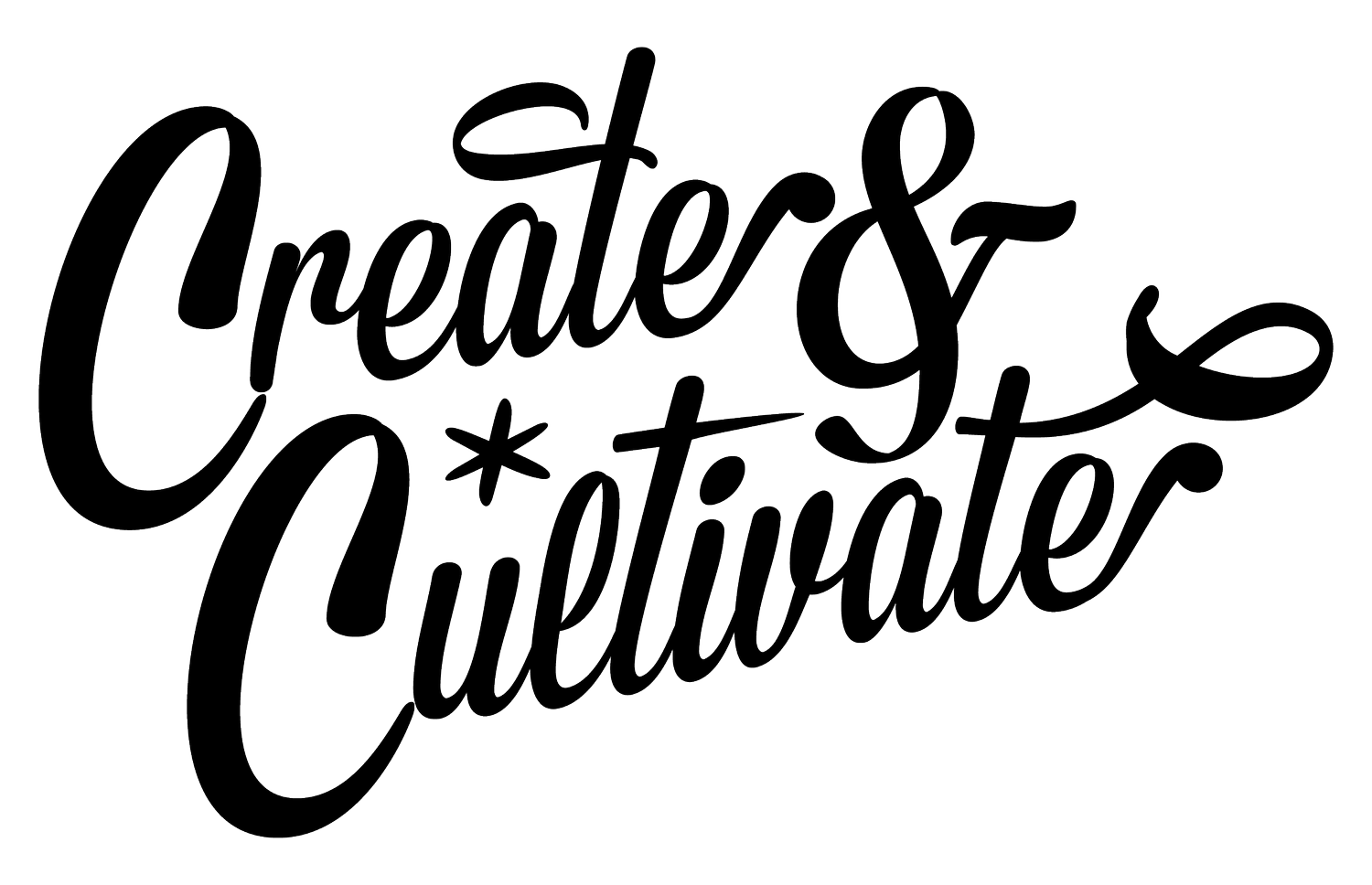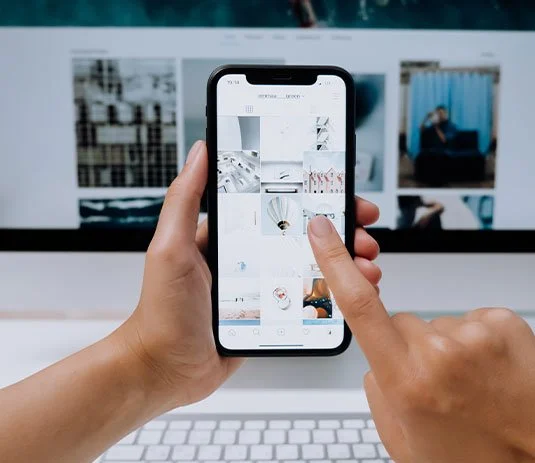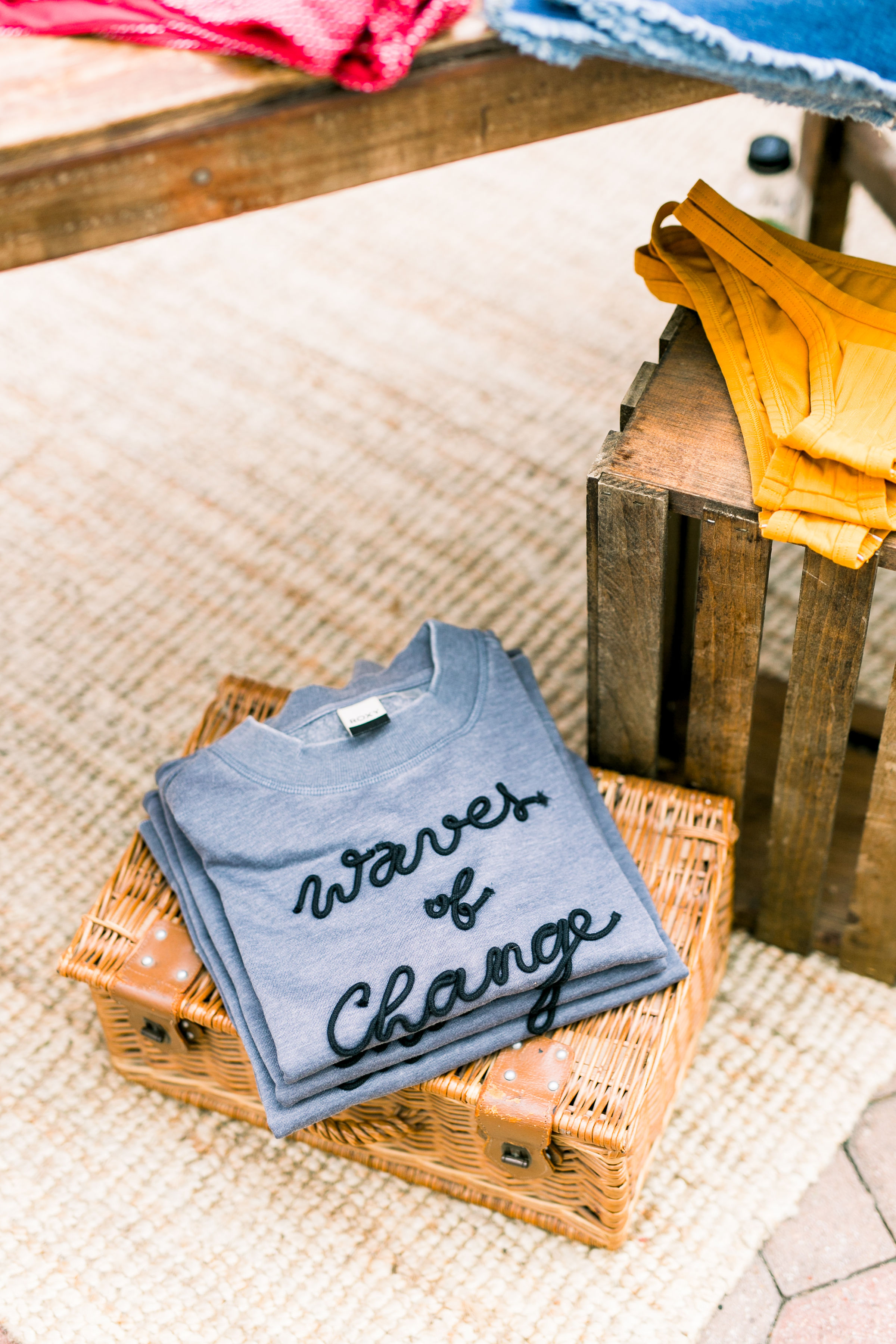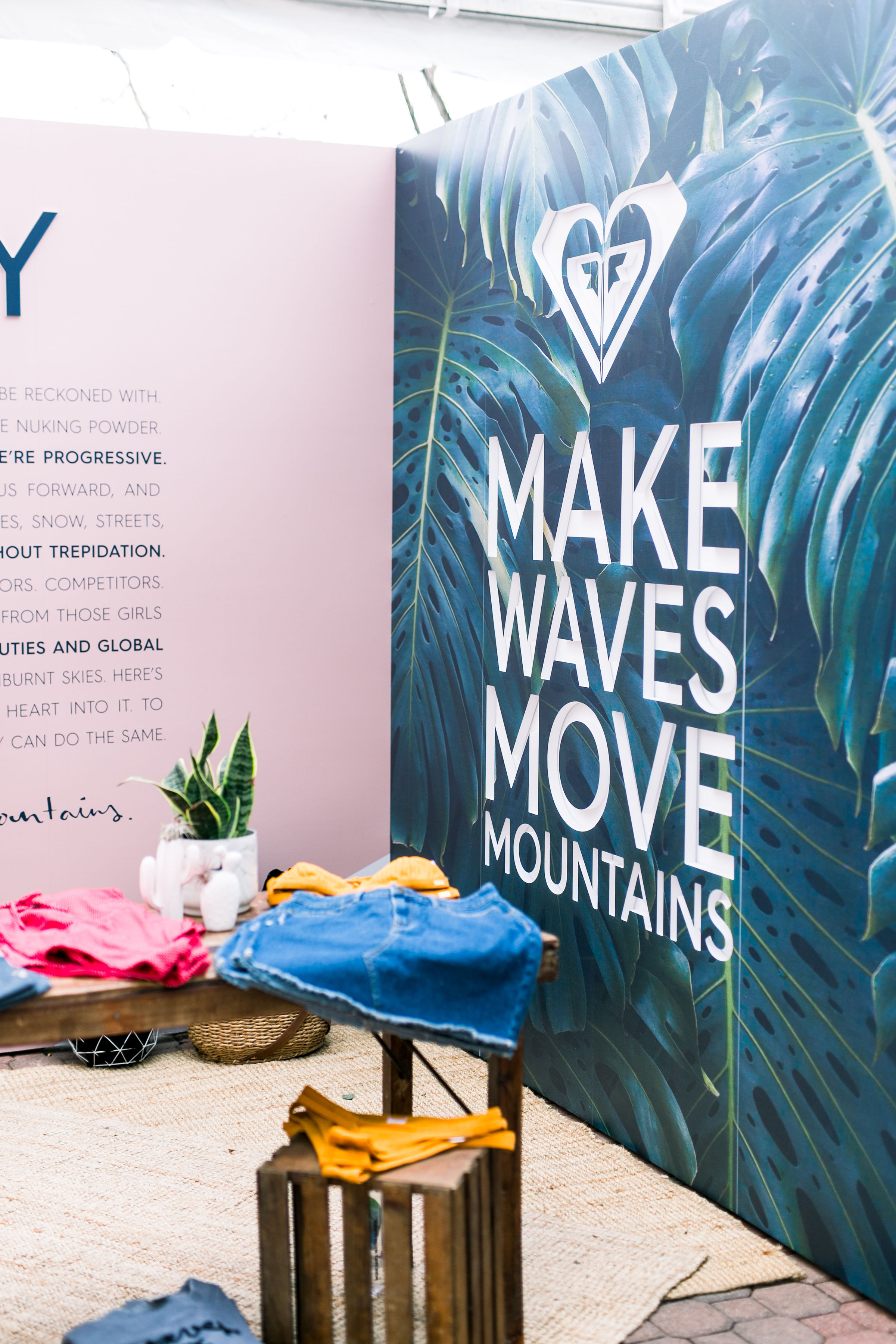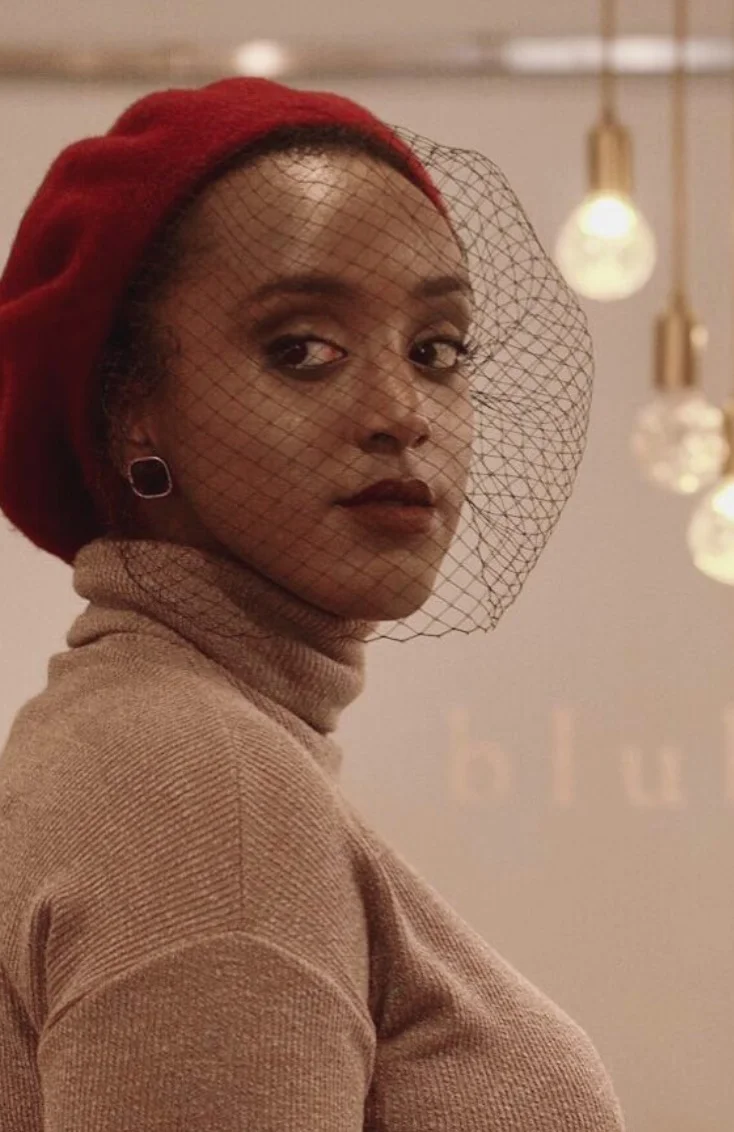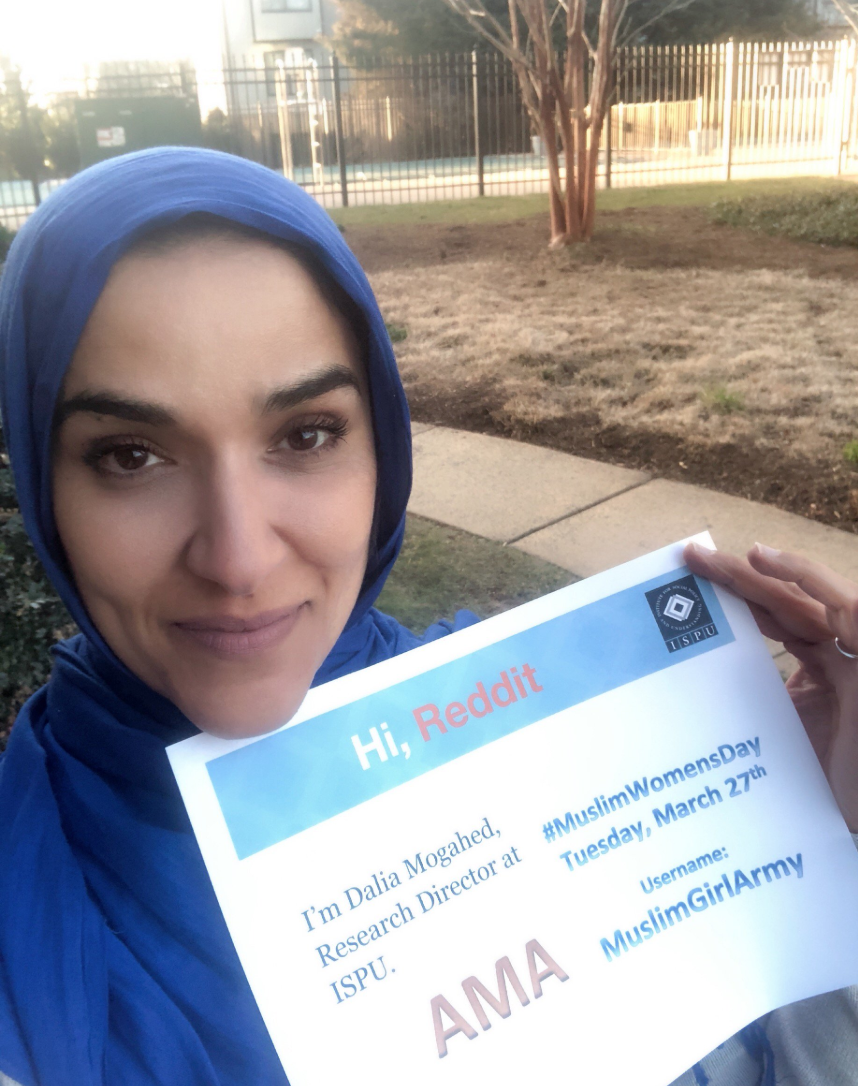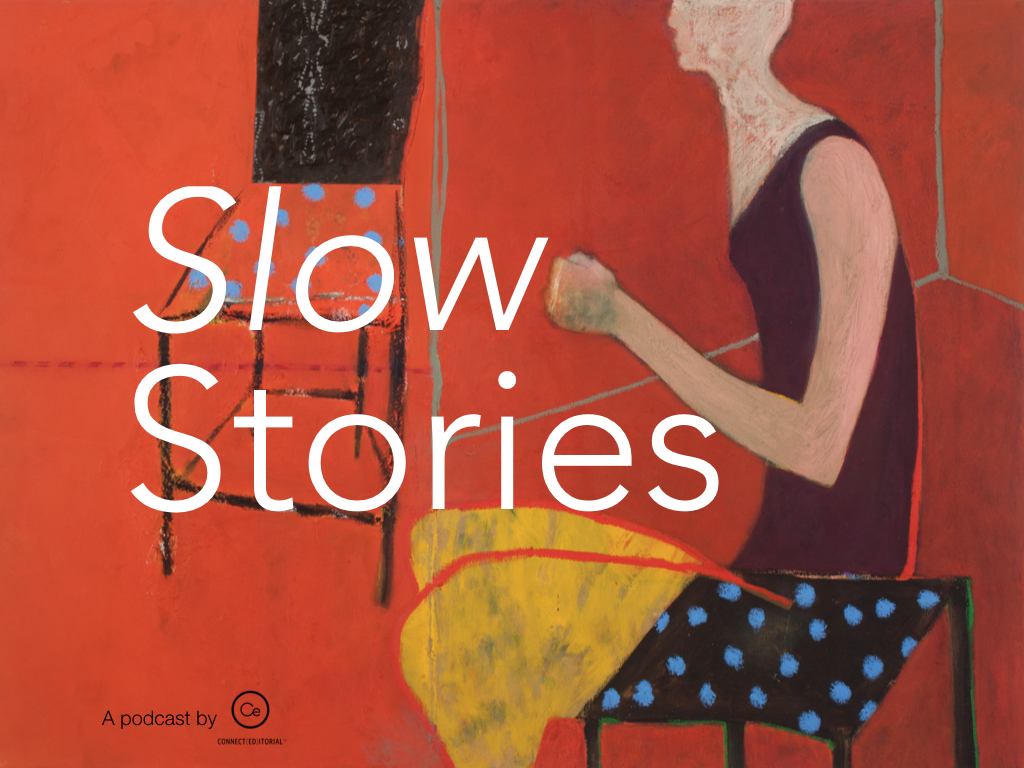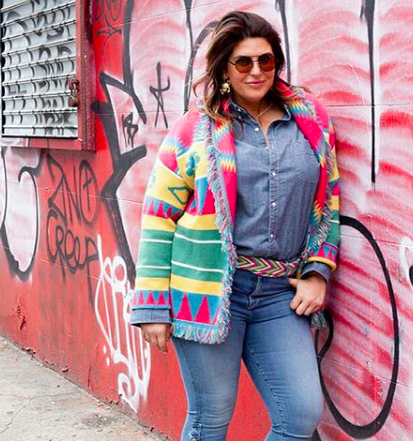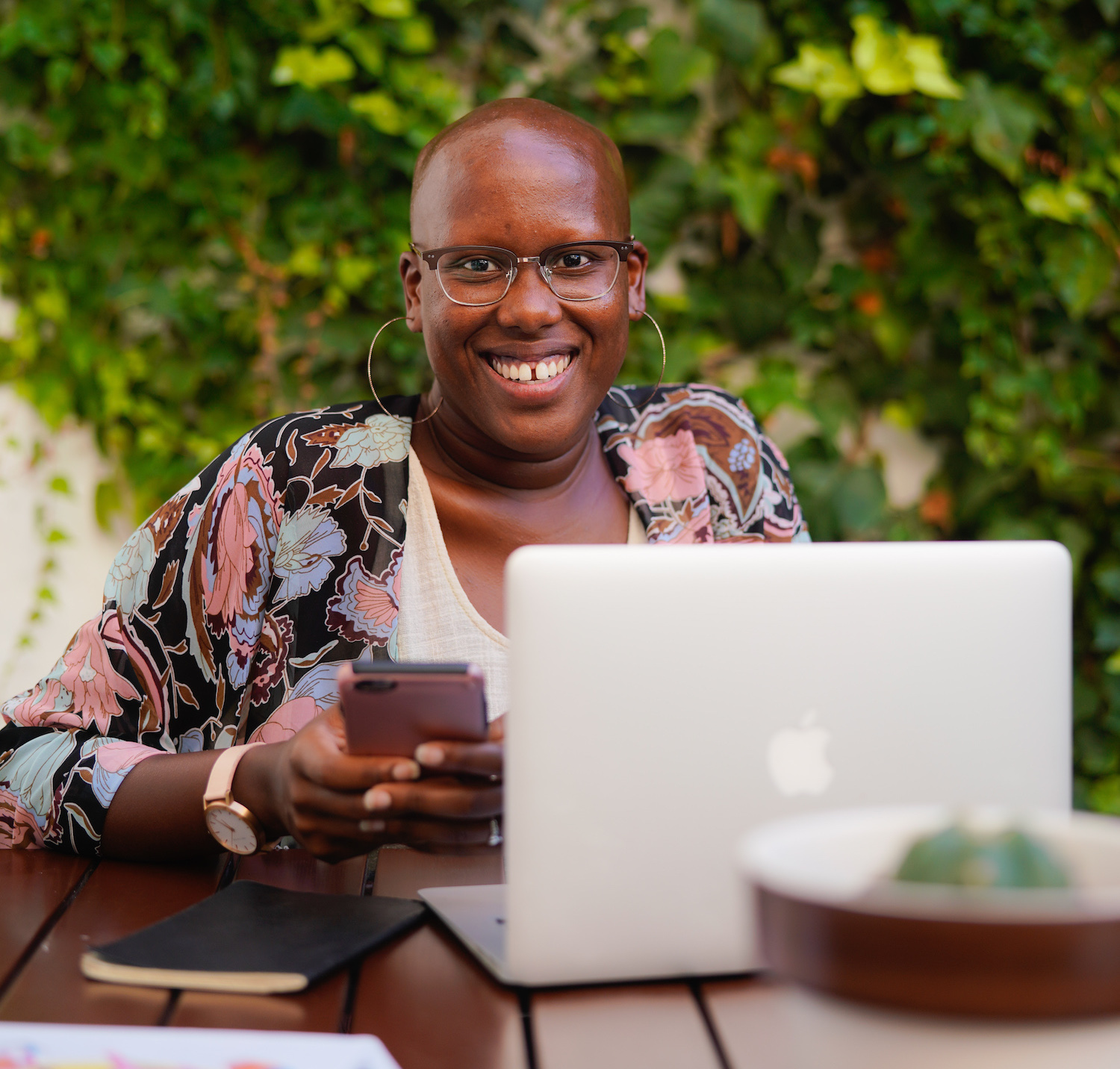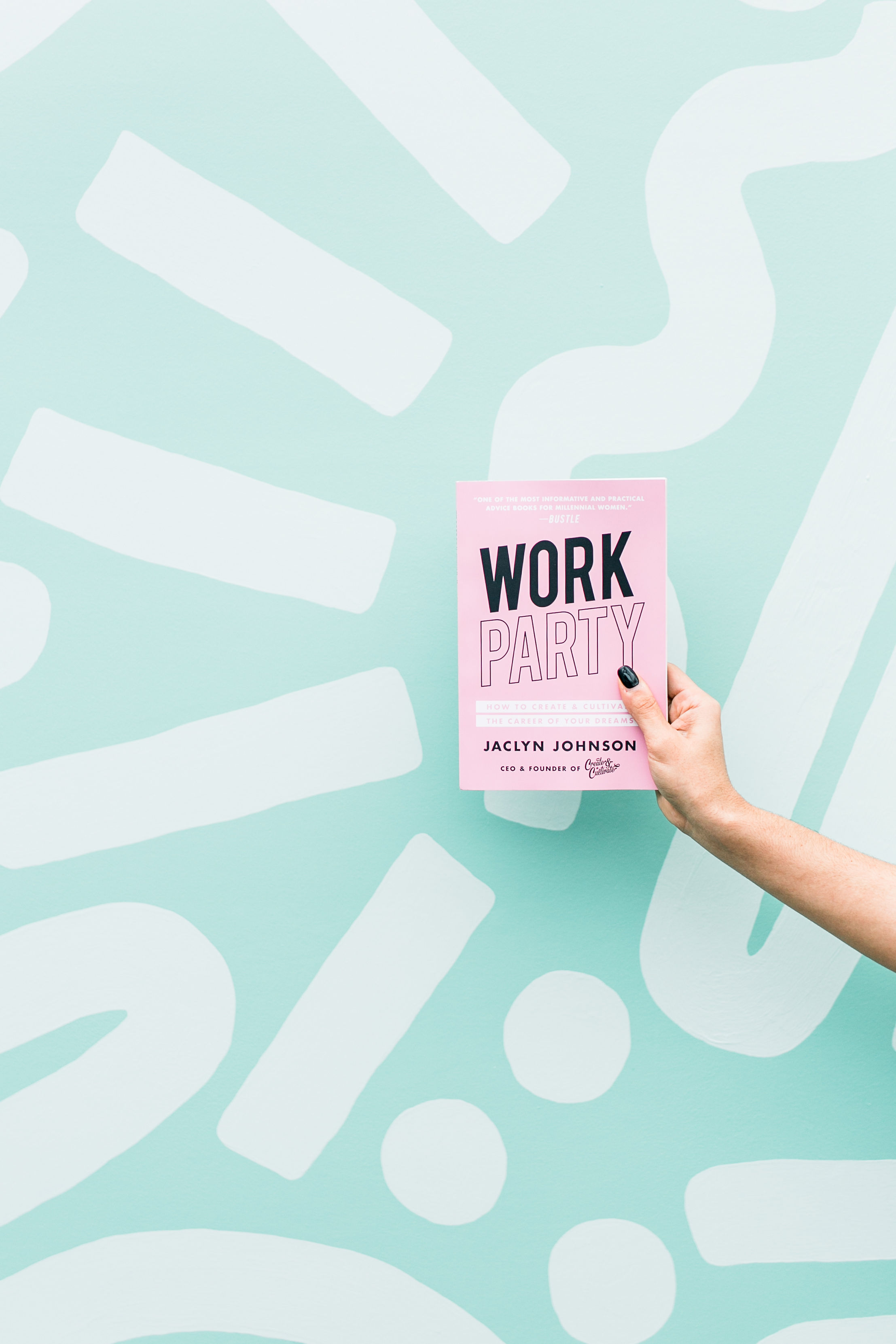Making Moves: Award Noms, Podcast Premieres, & Best-Selling Books
Celebrate and learn about the women making moves this week.
Every Friday, we here at C&C like to highlight the best news stories of the week that celebrate women and all of the incredible things they’re doing. Read on for improvements in cancer screenings, well-deserved award nominations, and a brand new podcast!
Shout out to Sandra Oh! Her show Killing Eve received the most BAFTA nominations, coming in at 14 total. Sandra and her co-star Jodie Comer are both up for best actress. Congrats ladies!
Your life is about to get a lot simpler. Lauren Conrad just announced that she will be launching her own weekly podcast. The podcast will be called “Asking for a Friend” and will center around Lauren talking with a specialist from industries like beauty, design, and much more.
Former First Lady turned best-selling author—talk about a hustle! Michelle Obama’s memoir Becoming is currently on track to be the best-selling memoir of all time. Becoming was the most sold book in all of 2018, with over 10 million copies sold.
Time to make some changes. The FDA recently proposed that all mammogram providers will be required to notify women with dense breast tissue that they may possibly need additional testing. This would be the first update to mammogram testing in over 20 years.
MORE ON THE BLOG
The Ultimate Guide to Being a Better Manager
You’re impacting the lives of your direct reports... this is bigger than just “work.”
Photo: Smith House Photo for Create & Cultivate
Have you ever dreamed of being in charge and then realized, “Holy crap... I’m in charge?” Maybe you finally got that promotion and now people report to you. Maybe you’ve started your side-hustle and have a gaggle of interns helping you move the dream forward. Or maybe you’ve been rocking your own business, and it’s time to hire your first few employees. Being the boss comes in all different formats, especially in our modern-day workforce.
While the structure of your team might look different than someone else’s, what makes a great manager can be understood, systematized, and executed. If you want to have a killer work culture, you’ve got to operationalize it. Every great boss understands the importance of how to manage people effectively, build teamship, and move everyone closer to a common goal. Taking the time to understand how to be a better manager will not only ensure the success of your business but will help elevate the careers and experiences of the humans working for you. You’re impacting the lives of your direct reports... this is bigger than just “work.”
If this is your first time in charge (or you want a refresher in how to be a better manager), read on—we’ve teamed up with Microsoft Teams to make sure you’re covered. Because, you’re not just a teammate now, you’re a leader and a manager. So, we’ve put together everything you need to know to make the most of management, whether it’s a team of one or a team of many! Let’s make some big things happen! Together.
Set Communication Best Practices
This might be a no-brainer, but you’d be amazed at how important it is to create best practices for how you communicate with your team, how they communicate with you, and with each other. And how you communicate is just as important. In a 2010 study by the Corporate Executive Board, they found that a culture that encourages open communication performed 270% better on long-term total shareholder return. Pretty significant. Here’s something to think about when it comes to your communication:
What mediums will you use to communicate?
Do you use email for most things or a chat platform to keep all your communication in one place? Do you manage most of your work back-and-forth on collaboration software? Do you group chat or conference call or use something specific for online meetings? Decide what types of software you will use for what types of communication, so that you can train your team in this and so that there’s some method to the madness. These collaboration tools are important for the effectiveness and efficiency of communication. And you should decide it upfront.
Pro Tip: There are so many collaboration tools out there, but what’s great about Microsoft Teams is its ability to integrate chat, project management, video conferencing, and calendaring. It’s one hub for teamwork.
What are communication on/off times?
As in, do you expect your employees to always respond, or are there general working hours that you expect timely responses within? Deciding and communicating this ahead of time will help keep everyone on the same page, and it will help determine what type of culture you have.
How should someone get in touch when things go wrong?
Make sure the people you’re managing know when and how to get in touch if they get sick or there’s a fire with a client or there’s something that needs to be communicated immediately. That way, there’ll be fewer issues where there’s an issue already.
Is your communication style effective?
Make sure you’re always giving specific due dates, clear with your expectations, and direct with your feedback. This will ensure your employees (and you!) don’t have to read between any lines. Also, rather than always telling your reports what to do, try asking specific questions to see if they can get to their own wisdom and strategy themselves (without you having to tell them).
Be a Master of Great Meetings
While meetings are the bane of many people’s existence, they don’t have to be. You simply need to be intentional and cognizant of what your meeting strategy is before you go into leading a team. Think about what the word meeting even means—the coming together of two or more people by arrangement—so you can make the most of them. In order to determine how you’ll best manage, ask yourself these questions and plan your meetings accordingly:
When will you meet (together as a team and 1:1 with your reports)?
It’s best to determine a meeting cadence for individual meetings and for team meetings. It’s likely that these are each weekly, but sometimes even twice-weekly, or every other week, depending on the nature of your work, your team structure, and the projects at hand. Great managers decide this cadence upfront, have a meeting planner, book the time on calendars so there’s a hold, and stick to the schedule (barring extenuating circumstances).
How do you meet?
Decide and communicate if meetings are held by default in person (post-COVID, of course), over the phone, or via online meetings. Making sure everyone knows what type of remote or IRL culture you have is necessary. If you’re doing a phone or online meeting, ensure your team knows the technology you expect to use when and if people are remote.
What is your meeting format?
Having a format for both your 1:1s and your team meetings will create consistency and an understanding of what everyone should expect to come with, to be prepared for, and what to share. If you want some cool ideas for group and 1:1 formats, do a little research and you’ll find great ideas like these!
Pro Tip: Videoconferencing and online meetings are easy with Microsoft Teams. Up to 250 people can join per meeting from your computer, phone, or tablet.
Figure Out What Makes Each Teammate Tick
If you want to experience the flow and productivity of true teamwork, you’ve got to understand the different personalities on your team. You can’t manage each person the exact same way (well, you can but it may not work out so great). In a survey of 80,000 managers conducted by the Gallup Organization, the single quality that made managers better than others was their ability to know what made the people on their team unique and how to capitalize on that. You can ask yourself these questions to help figure that out and have better team collaboration:
What motivates them?
Do they like external recognition, words of affirmation, meaningful work, quiet appreciation, continuous feedback, or maybe nothing at all? Pay attention and you’ll find clues, otherwise have a discussion about it. Ask!
What type of personality are they?
There are so many tests out there to help you better understand the individuals on your team. Whether that’s Clifton StrengthsFinder, or the MyersBriggs, or DISC assessment, it may be worth having everyone on your team take the same test so you know what makes each of you unique (and you can determine how to better manage them with that information).
Operationalize Your Goals
The point of a team isn’t for each person to play the exact same position. The point is to differentiate what the strengths, weaknesses, priorities, and goals are of your team. Each individual needs to understand not only what the biggest goal of your team is as a whole, but what their individual goal is and how that ladders into your big vision. You as a boss have to determine what your team’s north star is, and what each individual person is expected to prioritize on a weekly, monthly, and yearly basis in order to get there. (And in some cases, your team’s north star maybe be one decided by higherup powers that be.) Figure out if you’ve done the following…
Have you decided and communicated the goals and priorities of your team?
These priorities should ladder into the overall goals of your business. Your team needs to know where they are at, both at an operational level and a vision level. And don’t forget, if you’re not delegating the work to your team, you’re probably not able to get the really big things done. You’re just one person!
Does each person know what their overall priorities are for their role, and thus how to prioritize?
The Create & Cultivate team uses an amazing system for understanding and communicating their priorities to each other called “Hot Lists” where each manager requires their reports to send what their top priorities are each day with what they’re working on and general updates. As a manager, this gives you direct transparency into what your team is working on without having to micromanage and constantly ask or wonder. You could even communicate these hot lists in chat groups if you wanted.
Are you measuring?
As they say...they don’t respect what you don’t inspect... so make sure you have a system for measuring the progress you’re making with these priorities and goals, both at an individual and team level. A great book for the process and execution of this is “Traction” by Gino Wickman.
And...Lighten Up!
When you become the boss, you not only have the chance to be an incredible leader who impacts the people around you and influences the direction of a vision, but you get to make people feel valuable. If you can create a positive environment for your team, you’re literally contributing to their health (according to a huge study that showed the link between leadership behavior and heart disease. AKA, if you cause people stress, you’re causing them health problems). So have fun with your newly found bossdom. There are a few ways you can contribute to the good vibes of your team, that not only improve morale but make those working for you feel seen. Here are a few things to reflect on to lighten up the mood:
What small things will improve employee morale?
Maybe it’s having everyone’s birthday on the calendar so you can embarrass them with your terrible (or amazing) vocal abilities, or a team chat where you get to instant message funny things throughout the week that don’t have to be work-related.
Do you have an employee recognition system?
Find something that might work for you and your culture and your budgets. Recognition doesn’t have to be grand, it just has to be sincere. Here are some cool ideas if you’re looking!
Can you provide professional development?
Even if you don’t have budgets for killer conferences like C&C or expensive trainings with executive coaches, providing a great book or audible credits could go a long way.
Can you create fun offsites?
Sometimes we all just need a change of scenery. Maybe you tell everyone to meet you at the local Farmer’s Market, or you do a working team lunch by the water, whatever you choose... find meaningful ways to change it up. Sometimes, it’s just what’s needed to solve a hard problem together.
This is NOT everything you need to know about managing a team (not even close!), but hopefully, it’ll be a great place for you to start. Because everything gets better when we don’t try and go at it alone. That’s how you can make some seriously big magic come to life in your career...with a team!
About the Author: Maxie McCoy is a writer and speaker obsessed with giving women the tools they need to believe in themselves. Her book, “You're Not Lost: An Inspired Action Plan for Finding Your Own Way,” is one of the top motivational guides for professional women and is carried at Urban Outfitters, Barnes & Noble, and everywhere books are sold. Maxie specializes in creating meaningful offline experiences that provide practical action in workshop and group formats. She's worked with top brands, conferences, and companies to create original events that engage their target audiences both online and off. Her work has been featured on Good Morning America, TheSkimm, Forbes, Fortune, INC, Bustle, Business Insider, MyDomaine, Women’s Health, Marie Claire, Billboard, CNN, and many more as an expert in women’s leadership.
We’d love to know: What are your best tips for being a great manager? Let us know in the comments below.
This story was originally published on March 28, 2019, and has since been updated.
MORE ON THE BLOG
Day in the Life: Shilpa Shah & Karla Gallardo of Cuyana
“Customers craved more, they were tired of expensive low-quality products—we created a brand to fill that need.”
Welcome back to our monthly series, Day in the Life! Through this Q&A series, we’re giving you an inside look at the day-to-day lives of some of the most inspiring women in business. This month, we talked with Shilpa Shah and Karla Gallardo of Cuyana, the lifestyle brand for the modern woman interested in simple functionality.
Below, hear what these co-founders have to say about filling whitespace, what advice they have for for work-life balance, and the habits they’ve developed to be the best versions of themselves.
Tell us a bit about Cuyana. What whitespace did you see in the market? What need did you want to fill?
Karla: Fewer, better things is the philosophy behind all we do. We started Cuyana to inspire consumers to shop intentionally for high-quality pieces crafted with integrity. We saw the need for luxury-made items at an affordable price point - the consumer mindset was shifting, and we had the opportunity to be the better choice within fashion.
Shilpa: She was seeking higher quality products with purpose; logos and overt branding were no longer relevant. Customers craved more, they were tired of expensive low-quality products - we created a brand to fill that need.
Are you a night owl or a morning person? When do you do your most important work and why?
Karla: I’m a night owl but have recently been successful in transitioning to being a morning person. Getting an earlier start to the day enables me to spend more time with my son, Mateo.
Shilpa: I’m a night owl by nature. I’ve tried to become more of a morning person, but I’m still a work in progress!
What does your morning, pre-work routine look like?
Karla: I’m up early to ensure I have breakfast together with my family - with such a busy work schedule, breakfast is more dependable than dinner. The shared time together sets the foundation for my whole day.
Shilpa: I spend my mornings coming up with creative ways to cajole my kids out of bed - they’ve clearly inherited my night owl mentality! The rest of the morning is a wild dash to get everyone to where they are supposed to be and making it happen on time.
What’s your commute like? Do you listen to music, podcasts, or audiobooks? Any current faves?
Karla: I spend my commute looking at everything I’m devoting time to, ensuring that each task or meeting has purpose.
Shilpa: I take my time on the train to peruse the New York Times app or listen to podcasts and audiobooks - listening to "Becoming" narrated by Michelle Obama has been a wonderful experience.
Mark Twain said, “Eat a live frog first thing in the morning and nothing worse will happen to you the rest of the day.” What’s the first thing you do when you get into the office/to your desk?
Karla: Grab a cup of coffee - my brain doesn't process information until the first sip of my morning latte. I then head right to an early meeting with my bag and latte in tow - I rarely make it to my desk.
Shilpa: Definitely not eating frogs! I am typically in meetings first thing in the morning. I’m lucky if I even make it to my desk, but always have coffee in-hand.
What are you working on this week?
Karla: Everything from annual internal reviews to our exciting plans to expand retail!
Shilpa: I’ve been focused on exciting collaborations and our seasonal marketing strategies.
What advice do you have for balancing the minutiae of day-to-day tasks with big-picture planning?
Shilpa: Break down the big-picture plans into smaller, discernible milestones. Then you can plan all tasks the same way!
Karla: We plan our annual strategy every January, and it serves as the overarching framework for everything we do. New items pop up every day though, and it is important to constantly review my week to ensure that every meeting and task continues to ladder up to the big picture. I re-prioritize my week on Sundays to make sure I achieve key results by Friday. Also, I am very close to the data. It reveals whether the path we decided to take in January makes sense, and it will sometimes challenge me to make changes in the overarching strategy. I spend 2 hours looking at reports and thinking about the big picture strategy every week. It is my “zen” moment, and it brings back the focus.
What are some work habits that help you stay healthy, productive, and on track to reach your goals?
Karla: I make time each day to do something for the people I care about most. I then get some me time by working out a few days a week at home on our Peloton.
Shilpa: It’s not the quantity of time, but rather the quality way in which you spend it. I make sure that I connect with my husband and kids in ways that also meets their needs. It’s amazing how outsourcing the household tasks opens up more meaningful time together.
What are you reading/watching right now?
Shilpa: Anxiously waiting the last season of GOT!
Karla: Honestly, television is my way to zone out - I love watching laughable and outrageous shows at the end of my night.
When do you go to bed? What’s your “optimal” # of sleep hours?
Shilpa: Between 12-1 am. I would love to have 7 hours of sleep, but I usually end up near 6.
Karla: I get up early now, so I’m in bed by 11!
What’s the most rewarding part of your day?
Karla: The time with my son and husband. Whether our family breakfast in the morning or watching Mateo’s favorite movie, Moana, the moments I spend with my family are the best.
Shilpa: I cherish the time spent with my family. Sometimes, getting in those last few hours of quiet work time at the end of the day can feel rewarding too!
What’s something not a lot of people know about you?
Karla: I already revealed my guilty television pleasures!
Shilpa: I actually wasn’t very organized until I met Karla. It’s been amazing to see how our “fewer, better” philosophy has changed the way I live.
MORE ON THE BLOG
How This Pro Surfer Is Leaving a Legacy for Young Athletes
“There is no harm in trying something.”
Bruna Schmitz knows the ocean like the back of her hand. As someone who has been surfing professionally for years, Bruna found her calling early, and it’s paid off—since the age of 14, she’s been an ambassador for Roxy (one of our amazing sponsors at our Austin Pop Up!). Below, we chat with Bruna about her work, the water, and her favorite Roxy gear.
You’ve been surfing since age 9 and spent much of your teenage years traveling internationally for competitions. What did your travels teach you about leaving your comfort zone?
Everything. Traveling alone was a constant feeling of stepping out of my comfort zone, but I was young, blissfully unaware, naive, and didn’t have a lot of fears and doubts so it allowed me to grow up quicker and take care of myself and others around me. You make friends all around the world and become open to explore the unknown. It's been an amazing journey and I like to think I made it because I didn’t give up.
You were the youngest athlete to win a professional event in Brazil and competed professionally for 12 years before joining the Roxy team as an ambassador. What does your role with Roxy entail?
I joined Roxy at the age of 14, so I’ve been with Roxy for most of my career.
My role is to hopefully inspire young girls to follow their dreams whatever it may be. Growing up, I wanted to be a part of the Roxy team so badly—they had this group of girls who got to travel the world, surf, and they had so much fun. I remember thinking: I want to do that, I wanna be that. And I followed through. I became that. So with this legacy that Roxy has—one of being true to yourself and being exactly who you are—I hope I can inspire other girls to do the same. There is a little work involved: traveling, campaign, events—but I love every aspect of it.
What does your training routine/schedule look like?
I surf as much as I can. It does depend on nature, so it’s not something I can schedule every day. Sometimes we don’t get waves for weeks, so I just try to stay active every day; I do a lot of yoga and some pilates, and we snowboard a lot during winter, which I love.
What about your job makes you feel the most fulfilled?
It used to be winning events. It’s the best feeling in the world, but I don’t compete anymore, so nowadays it’s when girls tell me I inspired them to start surfing, or impacted their lives in a positive way. And being a face of a brand that sends girls this message to chase your dreams, do what makes you happy, be yourself…that’s something I’m super proud of.
“Do you want to live wondering, or do you want to give it a go? That’s my approach when I come across something unknown.”
Surfing doesn’t come naturally to most people. What advice do you have for newbies, not just to surfing, but to any dream that feels totally out of reach right now?
The most important thing is to try—there is no harm in trying. Surfing is a difficult sport; you’re dealing with the ocean, which is so unpredictable. You have to put a lot of time and effort into it, but you also know right away whether you love it or hate it. And that’s like everything in life—it either resonates with you or doesn’t. I don’t think there is a lot that’s out of reach—we put limitations on ourselves, create fears and obstacles that stop us from trying something new. But you have to ask yourself: Do you want to live wondering, or do you want to give it a go? That’s my approach when I come across something unknown.
What’s been the biggest surprise or highlight of your career to date?
Being approached to shoot a Sports Illustrated swimsuit edition. I remember being so confused as to why they chose me. I had no idea how big it was—I still lived in Brazil, I was so young and so out of the picture. I asked the editor how she found me and she said she Googled “cute surfer girl,” found a photo of me smiling, and decided I was the girl.
What’s the best advice you’ve ever received?
Do it because you love it, not because you have to. (Dad)
We’ve gotta know—what are your favorite of the latest pieces from Roxy?
My faves from this season are:
Taste of Tomorrow Long Sleeve Wrap Dress
West Cozy Place Strappy Jumpsuit
Beach Classics One-Piece Swimsuit (American Beauty Polkadot)
MORE ON THE BLOG
Muslim at Work: Two Women Share Their Stories
“Women of all faiths and no faith should see each other as partners.”
It’s #MuslimWomensDay, a day for celebrating Muslim women around the world and giving them the spotlight to share their stories. Since 2000, there has been a 50% increase of Muslim women in the workforce across the globe. But 61% of US-born Muslims say they have experienced discrimination at least once in their lifetime, and 68% of Muslim women believe the way the Media depicts Muslims is “unfair.”
Below, we spoke with Eman Idil Bare and Dalia Mogahed about their experiences being Muslim women in America, microaggressions in the workplace, and what non-Muslims can do to be better allies to the Muslim community.
Eman Idil Bare
Journalist, Fashion Designer, Law Student
What do you do for a living? Tell us about your career journey.
Haha, this question always stresses me out! I do a lot. I am a journalist first and foremost. I primarily work on longform investigative stories, but I also write a lot of fashion features for some semblance of balance.
Then I am a fashion designer. And most recently, a law student. To some people, my career journey might seem a bit...scattered. But there is a reason and a purpose, I promise! The nucleus of everything I do is social change. I went to journalism school because I did not like the way people who looked like me had their stories told. But working as a journalist showed me that the problem was much bigger than how a reporter told a story. And it seemed like the only way I could really grow my career was by selling myself as a “hijabi” reporter. Frustrated, I decided to take a break from journalism...and go to fashion school. I needed time to think my next few steps, and school was my comfort zone. And it was the best decision I ever made.
I was able to reground myself and figure out my purpose. That led me to launching my fashion line, and those experiences led me to law school. The most important lesson I have learned in my life is that nothing has to be linear.
You hired all black models for your runway debut at NYFW—and the show was amazing! Tell us about that experience.
I wanted to build my own table. I am at a point in my life where I am able to create the things that I once advocated for. I am tired of asking for inclusion from the fashion industry, or from any industry. I think that any brand that does not have employees that reflect the markets they cater to are making that decision intentionally. I did not see women who looked like me on runways as a child, so I decided to make my own brand because I deserve to be represented.
The experience was life changing. I loved seeing how happy my models were to notice that they had men and women doing their hair who actually knew how to care for black hair. It was the first time most of them walked in a show and did not feel like an afterthought. In 2019, models needing to bring their own makeup to shoots isn’t “unfortunate,” it’s racist. And we need to address it as such.
What are some of the microaggressions you’ve personally faced as a Muslim woman in the workplace?
This is an email that the communications director of a school board in Ontario sent me:
I think what a lot of people fail to understand is that my entire existence, as a black Muslim woman, threatens a lot of people’s sense of privilege. People really think that Muslim women are oppressed, or black women are inferior. Because of the nature of my work, a lot of the people I interview are men in positions of power. They aren’t use to someone who looks like me holding them accountable. And a lot of the times, they snap. This is email. And they expect me to back down. But Somali women aren’t known to be passive, and I am loyal to my roots.
Also - shout out to Terry. If you’re reading this: No, you can’t “speak to my manager.”
Do you think things are getting better or worse for Muslim women in the workplace, and what factors contribute to this?
I think we need to remember that there are different kinds of Muslim women. A lot of Muslim women are white passing. And a lot of Muslim women don’t wear hijab. So, for some Muslim women, I think their privilege allows them to benefit from their proximity to whiteness.
Black Muslim women will always carry the weight of being Muslim and Black. And yes, I think it is getting much harder for us. And I think it is the responsibility of non-black Muslim women to ensure that it gets better for all of us. Which sometimes just means reminding the world that there are Muslims who have to deal with Islamophobia, and anti-blackness.
The contributing factor? A racist President and the white supremacy that fuels him.
What can non-Muslim women do better to support their colleagues in the workplace?
Honestly, acknowledging that we are not a homogenous group. And that even though we are Muslim women, we still have individual personalities. I think that gets lost a lot. That we are our own person. “What do Muslim women need” is as difficult to answer as “what do white women need.” The most important thing anyone can do is acknowledge that.
What advice would you give to another Muslim woman who might be facing adversity in her workplace?
I think sometimes as Muslim women, or as marginalized women, we can be too forgiving. It takes zero effort to be a good person, or to treat another human being like a person. Do not blame yourself, and do not think you need to change who you are to accommodate a workplace that does not value you.
Dalia Mogahed
Director of Research
What do you do for a living? Tell us about your career journey.
I help build bridges and strong communities with research. The formal job title is “Director of Research” at The Institute for Social Policy and Understanding. I am here after my time at Gallup heading Muslim studies there. Before that I was pursuing my MBA at the University of Pittsburgh. I am grateful to be paid to do what I love.
Your TED Talk, What It’s Like To Be Muslim In America, was one of the most-watched talk of the year. Why do you think it resonated so well with its audience?
I’m really taken aback by the success of the talk and so grateful that folks find it resonates. I had hoped to reach people’s hearts with my story and weave the power of the facts about Muslim Americans into that personal narrative. I think our current political moment has a lot of people searching for that human story, and for facts to replace the fear we are fed in so much of our political discourse. I’m so grateful for the opportunity to share my story and research.
You lead research and thought leadership programs for ISPU. What are some of the most interesting or surprising findings you’ve come across in your work?
How much time do you have? Our discoveries are constantly surprising me, even though I’ve been at this for nearly two decades. We discovered for example that American Muslims are the most likely faith community to condemn violence targeting civilians, contradicting Islamophobic tropes about the community. We also found that mosques are a source of moderation, where frequent attendance is linked to greater civic engagement and service to society. We found that Muslim women surpass their male counterparts in education, and what truly oppresses them is not their faith or hijab, but Islamophobia and racism. We also found that Islamophobia is bad for everyone who cares about freedom and safety in America. The more the public is led to endorse Islamophobic tropes, the more they also support violence targeting civilians, authoritative policies and discrimination against Muslims. We also discovered that though white supremacist are responsible for the majority of American casualties at the hands of ideologically motivated violence, Muslim alleged perpetrators receive 770% more media coverage for foiled plots compared to white nationalists.
“Hijab is an issue of religious freedom and freedom of expression and the liberal position should be to defend a woman’s right to choose or not choose it.”
What are some of the microaggressions you’ve personally faced as a Muslim woman in the workplace?
I have been blessed with mostly supportive and inclusive work environments in my career. Where microaggressions come in are more often from random people in the public, or online, where I’ve endured literal campaigns of hate targeting me. In the public, microaggressions often take the form of passive aggressive “pity” for me as a hijab-wearing Muslim woman. The assumption is that some man forced me to dress this way, or that I was brainwashed or socialized into “accepting second-class status” as one woman put it. To me, assuming covering is oppressive is itself extremely misogynistic. It unconsciously is built on the idea that a woman’s power stems from her physical allure versus her intellect, and therefore by covering her physical self she is “oppressed.” Yet, when men are fully covered no one says they are oppressed. I find that extremely problematic. I of course know that some women are forced to wear hijab, and that hijab is sometimes politicized, and this is absolutely wrong. But just because something is sometimes forced on women doesn’t make it inherently oppressive even when freely chosen.
Imagine applying this logic to sex. Women are sexually assaulted in staggering numbers all over the world. Human trafficking is a global industry of billions of dollars. Rape is a weapon of war. But this does not make sex inherently oppressive to women when freely chosen. Imagine a campaign to ban women from having sex in order to “liberate” them? It would sound absolutely ludicrous to most people and banning hijab to liberate Muslim women should sound equally ludicrous. According to ISPU research the vast majority of American women who are Muslim and wear hijab chose to do so. The majority say it is an act of religious devotion or an expression of identity. Hijab is an issue of religious freedom and freedom of expression and the liberal position should be to defend a woman’s right to choose or not choose it.
Do you think things are getting better or worse for Muslim women in the workplace, and what factors contribute to this?
As a cautious optimist, I think things are getting better. I say that because we now have a language for calling for equality. We have laws and precedents to respond to discrimination. We have growing public awareness of the reality of anti-Muslim discrimination, and this wasn’t the case even 10 years ago.
What can non-Muslim women do better to support their colleagues in the workplace?
Women of all faiths and no faith should see each other as partners. This means listening, getting to know each other as people, bragging about each other’s work, and amplifying each other’s ideas. It also means interrogating our unintended biases and asking sincere questions rather than assuming.
What advice would you give to another Muslim woman who might be facing adversity in her workplace?
I actually get this question on a very regular basis, sadly. My advice is never ever assume the whole world is against you. Look for allies, don’t isolate yourself or believe the hate is the majority, because we know it’s not from rigorous research. Most Americans want to live in a country where no one is targeted for their religious background. If the issue is a legal one, don’t be afraid to take legal means to address it if all other attempts at addressing it out of court have failed. The most important thing is to surround yourself with people who love you and who support you. Take care of yourself emotionally and spiritually. Don’t let hostile people penetrate your heart.
MORE ON THE BLOG
C&C Classifieds: FIGS, Bird, Will Reed, & More!
We just found your next dream job.
We just found your next dream job.
FIGS - Austin, TX
FIGS - Los Angeles, CA
Bird - Austin, TX
Will Reed - Dallas, TX
Bright Horizons - Remote
FabFitFun - Los Angeles, CA
Business Analyst, Finance
Dermologica - Carson, CA
Proper Hospitality - Santa Monica, CA
Levity Live - Los Angeles, CA
HelloFresh - New York
Leafly - Seattle, WA
Mozilla - Charlotte, NC
Slow Stories: Industry Interview: Brandy Pham of PLANOLY
“If you want to build a conscious business, it needs to connect with people, and you have to take the time to craft a mindful strategy before even bringing it to market.”
Since extending CONNECT(ED)ITORIAL's Slow Stories Podcast into a column, I've loved connecting with the Create & Cultivate community around the conversation of slow content. I’m also thrilled to announce that season two of the podcast has recently launched on iTunes, and with that in mind, I'm even more excited to share an exclusive portion of our first episode with Brandy Pham of PLANOLY right here on the C&C blog!
For those of you who aren't familiar with her story, Brandy is the co-founder and chief creative officer of PLANOLY, the leading visual management and scheduling tool for Instagram. In our podcast interview, Brandy and I discussed her transition from jewelry designer to technology entrepreneur, and today she follows up on our discussion with some tactical advice on how to implement slow content and planning into your social media strategy.
Check out the full episode here and enjoy musings from Brandy below.
Why is it important to slow down as a digitally-minded founder? Can you share an instance of when slowing down inspired innovation at work?
I don’t remember ever getting inspired by staring at a screen or working tirelessly. So inspiration really comes when your mind is clear and you’re well-rested. When I took a mental break from work, that meant saying no to meetings, no to coffee dates, and not even going into the office for a while — and that's when PLANOLY's new product StoriesEdit came into fruition. I took a step back and really evaluated our roadmap and brought everything back to the perspective on why we first started PLANOLY, and that was to give power to small business owners like me. With that said, I wanted to go back to focusing on how we can further help our users build and grow their businesses. What type of products can we build (in addition to PLANOLY) to give them this power? In this day and age, it’s so vital to have an online presence and a digital strategy, and content is actually the most challenging part for businesses to create. Digital marketing is generally part of our everyday life now, and we can’t hide from it because that’s how consumers are learning what’s new, what they should buy, and so on.
StoriesEdit came to mind because we wanted something that was very easy and would be on web, but also give users the power on mobile to create more content and share products or stories that they may be sharing on their blog, and then easily post it all to social media. We started by launching with Instagram Stories templates, but we’re actually adding more canvas sizes for your grid and Pinterest too. We’re adding more templates that will help anyone who wants to share their products and their content easily on social media — With StoriesEdit, it’s like you have your own graphic designer on your team and no one knows it. That’s the beauty of this new product that we’ve launched!
How would you advise women who want to create a thoughtful content strategy, and what are some ways to utilize PLANOLY in this process?
I think that everyone should narrow down their goals and list out what is their purpose, what value they are bringing to their audience, and then work back from that. What are you really good at and what are people coming to you for specifically? And with PLANOLY, you’re able to actually create all that content, lay it out, and thoughtfully craft out your story so that you can work more seamlessly and efficiently. I think that using our grid and drafts features are great ways to strategize content because with drafts you can plan out by topic and then add content back to your grid whenever you are ready. I believe that people should decide on their content buckets and then use drafts first — you can do it the same way for Instagram Stories content too. You can use drafts for Stories and then really carefully plan out what type of stories you want to share. For example, on Mondays you share “A Day at the Office” or Tuesdays can be “Behind the Scenes at a Shoot," and so on. There are so many ways that you can use PLANOLY for your content strategy.
A big theme that’s always come up in these conversations includes how the fast- paced business landscape coupled with our content consumption habits can affect our productivity, and more importantly, our mental health. How have you learned to strike a balance or understanding when and what to post?
It's different between my personal account and the PLANOLY account. For PLANOLY, we always follow our content calendar, but we try to be very thoughtful about what type of content we're sharing on there. We really do ask what value the content is going to give to our audience and how it will spark inspiration or motivation. Our tone and brand voice are always positive (we never want to be negative!) even if it's something like having enough sleep, we turn it into something you can find funny or laugh about in a positive way, and in turn, that makes our audience smile.
For my personal account, it was very hard for me at first to share really personal stories, but I feel like it's my responsibility given my platform to share experiences with my son having autism by being an advocate for him, and also letting parents know that they're not alone. So, even when I'm drafting out those captions on PLANOLY, I take my time because I really like to sit on it before I post it. I would even tear up and cry before posting! I think it's ok to be vulnerable on your personal page and I always try to be mindful of not coming off to negatively, even if I'm sharing some type of struggle. For me, those are the two ways of posting on a personal and business account.
Slow content in many ways is all about the idea of “quality vs. quantity.” With that said, as an expert in the space, what would you say are the top pillars of slow, quality content?
I think for me, the top pillars are the following:
- Quality Images
As a marketer, branding professional, and consumer, it's important to share really clear, beautiful images. For example, say you're a photographer, and you've posted something really blurry — I automatically think that's the quality of your work and that can be a really bad look! So it's essential to have high-resolution photography.
- Messaging & Brand Voice
Your brand has to have clear messaging. Whether it's the graphic on your content itself or your caption, you should be really clear with your audience, and they should know exactly what you're talking about. The content also has to be on-brand.
- Value
The value of content is so important. I think everyone should always ask themselves before posting or even creating content, "What type of value is this bringing to my audience?" or "How does it make them feel?" And I would even ask myself, "What values does it bring to me and how does it make ME feel?" As the content creator, you should put yourself in your audience's shoes and really have that empathetic view, and if it makes you feel good/brings you value then your audience will receive it well too.
Are there any last words of wisdom that you’d like to share regarding slowing down, creating enduring content strategies, or building a conscious business?
I think too often that people want to launch a brand or business without really thinking it through, and don't really think about what it takes to build a successful company. If your brand is relying on just your product, there's no way it's going to stand out in the crowd. And if you want to build a conscious business, it needs to connect with people, and you have to take the time to craft a mindful strategy before even bringing it to market.
There's room for everyone, and everyone has a story, and you have to remember that people hold on to those stories. That alone is really intimate and powerful. So when you're starting off ask yourself, "What's the story I want to tell? What is my purpose? How is my product bringing value to potential customers?" You also have to ask yourself how you're going to make a living from this because you can't fund your business or pay your bills at the end of the day if you don't have a business strategy and think about these details before starting.
Rachel Schwartzmann is the Founder and CEO of The Style Line LLC. She created The Style Line in late January 2011 via Tumblr and has fostered The Style Line’s brand in its growth since then. Rachel has been featured in esteemed sources including Forbes, Refinery29, and MyDomaine and has also spoken at Create & Cultivate and Columbia University on establishing a unique brand point of view and entrepreneurship. On October 1, 2015, Rachel took The Style Line in a new direction as a boutique content company with the introduction of its slow content agency CONNECT(ED)ITORIAL.
MORE ON THE BLOG
We Asked Business Owners For The Most Priceless Advice They've Ever Received
“Compression of time equals value.”
How did you celebrate International Women’s Day? We teamed up with Mastercard last Friday to host a gorgeous dinner party for some of our favorite female business owners, entrepreneurs, and influencers, including Busy Phillips, Ty Haney, Jen Gotch, and Adrienne Bosh. At the dinner, we announced the launch of the Mastercard Women’s Business Advisory Council, an innovative group of women who will be sparking a 365-day conversation at events and online, where they will dish the priceless advice and mentorship you need to build and grow a successful business.
Our theme for the evening? Her impact is priceless. In line with our tagline, we asked some of our dinner guests for the most priceless advice they’ve ever been given, and their answers are on point—take note, ladies!
“The most priceless advice I’ve ever been given is to ask for help. I think sometimes it can be really hard to ask the people around you for help, but it can be incredibly important because it allows you to do so much more.”
- Amy Nelson, Founder & CEO of The Riveter
“To know myself and not sell myself short.”
- Sonja Rasula, Founder & CEO of Unique Markets
“Compression of time equals value. For me, that means trying something really quickly, failing fast, and taking those learnings and applying it to the future.“
- Ty Haney, Founder & CEO of Outdoor Voices
“My mom said you have to be true to yourself—that’s where it all is. And she was right.”
- Busy Phillips, Actor, Director & Host of Busy Tonight
What’s the most priceless advice you’ve ever received?
This post is sponsored by Mastercard.
MORE ON THE BLOG
Making Moves: Pop Stars in Politics, Networking Retreats, & Talk Show Trades
The first person on Mars? Most likely a woman.
Each Friday, we highlight five news stories that celebrate women and their impressive accomplishments. Read on for badass networking retreats, women in space, and a new female talk show host!
Ariana Grande is saying, “Thank U, next!” to unregistered voters. The pop sensation started the #ThankUNextGen initiative which allows fans to register to vote at her concerts during the Sweetener tour, as well as through texting.
Networking just went next-level. The company Baddies and Bosses recently announced a retreat for black millennial women in sunny Cancun, Mexico. The retreat will focus on building meaningful relationships in the workplace.
The saying goes that men are from Mars, but it looks like a woman will be there first. The head of NASA recently spilled on a podcast that they are working hard to make sure a female astronaut is the first to step foot on the neighboring planet.
Get ready to stay up late! YouTube star Lilly Singh will be taking over Carson Daly’s late-night NBC talk show, making her the only female late-night talk show host on a Big 4 network. You go girl!
Making moves and making money! The career pathing platform and startup Landit recently closed at $13 million in Series A funding. The company was co-founded by Lisa Skeet Tatum and Sheila Marcelo—two women of color—and works to increase the success of women in the workplace.
MORE ON THE BLOG
Tough Stuff: How to Do an Annual Performance Review
Feedback is your friend.
At C&C, we know being a woman in business isn’t always sunshine and rainbows. That’s why we’re starting a new monthly series called Tough Stuff , where we talk about some of the less glamorous parts of having a killer career. Below, we’re sharing how performance reviews—scary and annoying as they might be—are crucial to a healthy work environment.
In a world of instant gratification, double tapping, and asking Siri for the answers to your burning questions, the concept of an annual performance review is pretty much as “over” as MySpace. Would you wait a calendar year before telling your surgeon they botched a recent procedure? Or a year to complain about bad service in a restaurant? Of course not.
And yet, the most common complaint I hear from entrepreneurs is that they just don’t have time for performance reviews. Sigh...if only they could press the “like” button and move on. Effective evaluations consist of real-time feedback that engage employees and produce better results. Similarly, if an employee isn’t performing to your standards, effective communication can help build a disciplinary file that will please your lawyer in the event they have to defend a future claim.
When clients tell me that formal, scheduled performance reviews are as realistic as the tooth fairy, I offer the following advice:
Make Feedback Part of the Culture, From the Top Down
Communication about performance expectations should begin when you hire an employee and should continue regularly. Your employees will perform best if you articulate what you want from them and give them guidance on how to get there.
When hiring managers, let them know that communication and feedback is one of your priorities. Encourage your managers to understand the value and importance of feedback to your company’s culture and improving employee output. Invest in training resources at the outset of employment in order to best achieve a trickle-down effect. Training can take the form of internal dialogue or bringing in a resource to coach your management team. Once they are trained, ensure that managers know they will be reviewed on the timeliness and quality of their feedback.
Create a For(u)m for Feedback
Ideally, feedback should be given in the moment, so an employee has the opportunity to correct or improve the behavior or work product. The easiest way to accomplish this is by email or via other digital forms. This serves both the purpose of feedback and creating a record, which can come in handy if disciplinary measures are needed—more on that later.
There are numerous performance feedback apps that allow self-reflection, managerial, peer, or even customer feedback. Alternatively, companies can develop an internal email template or intranet form so that all feedback touches on the same designated criteria. This cultivates a more objective and systematic approach to evaluations.
Define Success
Feedback is best given with measurable goals, whether individual or team-based. For example, you might define success by an on-time or on-budget delivery. If effective performance isn’t calculable by objective measures, create company values that the employee must be successful in and define tasks that exemplify those values. If “customer satisfaction” is a company priority, then timely resolution of customer complaints or high customer satisfaction ratings might be task-oriented successes. If your metrics aren’t being met, the employee needs to know that. And managers need to know that it’s part of their job to help workers perform at their highest level, which they can’t do without letting people know where they can improve. The performance feedback forum should double as a performance improvement plan, designed for disciplinary or coaching purposes.
When You’ve Tried Everything
What happens if an employee just isn’t getting “it,” and the feedback process needs to move to a more formal disciplinary process or termination? The time spent documenting performance deficiencies can help decrease liability when done properly. More frequently though, I get calls from clients lamenting about a terrible employee they need to fire (always immediately!), and when I ask to see the file, they send over a pile of glowing performance reviews. This undermines the reason for the termination (lack of performance) and makes the employee think they are being let go for a more sinister (or illegal) reason. To minimize risk and maximize performance, be honest, be timely, and be your employees’ best role model to success.
Sahara Pynes is an attorney at Fox Rothschild LLP whose practices focuses almost exclusively on minimizing liability against lawsuits through preventative counseling on a range of employment issues. She works directly with business owners and their management teams to enhance company culture and provide practical strategies to manage human resources and risks. Sahara was named one of Angeleno Magazine’s Most Dynamic Women of 2018. If you’re a business owner who doesn’t know what forms to give a new hire, how to properly classify and pay employees/contractors or just wants to button up their HR issues, reach out to Sahara at SPynes@Foxrothschild.com to see if she can help.
MORE ON THE BLOG
6 Ways to Reinvest Your Tax Refund and Make Your Business Profitable
Make your money work for you.
Photo: Polina Zimmerman for Pexels
If you're investing in yourself this year, you should take a minute to think about what that means for your taxes. Don't fret, this is the good kind of tax post. Early bird catches the IRS worm, after all.
And with tax season just around the corner, it's never too soon to give pause on how you're going to spend a refund. While everyone will tell you that year one of being a small business owner is the hardest, during tax season, there are multiple credits you can take.
If you’re in the position to get refund from the IRS, the best decision you can make as a business owner is to put that money to work.
Here is how to reinvest your tax refund. Use these six ways to make sure that year two is golden (or at least in the green).
You’re only as good as your team.
You hear this again and again because the numbers do not lie. It costs you time and money to employ workers who do not work at optimum capacity. According to a study conducted by ADP, engaged employees are 57% more effective and 80% less likely to leave your company. Employee turnover or a disengaged employee can cost you $2,246 per year. To power your bottom line you need to make sure your team is happy and appropriately paid. It might be hard to see the payout to pay your employees more, but it is a long term investment.
The goal shouldn’t be expansion (unless you really do need to add to your team), but reinforcing the team from within.
Know When You Need to Delegate and Let Those Reigns Go
If your tax refund gives you the flexibility to outsource tasks that are eating away at your time, it might be the right time to consider doing so. For instance, if as a business owner you’re attempting to cut corners for the sake of funds, but you’re wasting time in the office sorting, organizing, answering customer support emails, or you’re losing hours in QuickBooks, figure out what you’re costing yourself.
An easy way to do this is decide what (if you were profitable) would you be paying yourself. If paying someone else is cheaper hourly than what you are worth, you’re losing money. Delegate and open up your schedule to focus on other parts of the business that only you can handle.
You’re a valuable asset to yourself, don’t diminish that by refusing to hire or delegate.
If You're Doing It Good, Tech Will Help You Do It Better
Are you a small business without a website? Do you need to update your photography equipment? Investing in foundational elements of your business is key and will take you to the next level.
Beyond the basics, there is life-changing tech for every business. The primary reason most new small businesses fail in the first two years is generally attributed to a lack of marketing savvy.
Companies that make it past the two year mark have found a way to streamline marketing and social media experience- it’s nearly impossible to engage customers without them. And for a time-strapped new business owner
Investing in the right automated marketing tools is one of the best decisions you can make. Research the different options that best fit your business.
Simply Measured, Keyhole, and Sprout Social are three great options worth looking into. There are multiple plans that offer everything from brand monitoring to reporting tools. This tech will also help you analyze where you’re performing best, so you can direct attention into areas that make the most sense to make that money.
Pay Off Business Debt
If you’re racking up points on that AMEX, you might be tempted to take a vacation, but what you should do is pay off your bill. When you pay off your credit cards you are basically making at 13 to 20% ROI, depending on your APR.
Become a Lean, Green, Tax Rebate Machine
If you have the ability to install solar panel, you can lower your future tax bill. The government offers tax incentives for businesses that invest in green technologies.
Businesses can deduct 30% of their solar install cost on their federal taxes. Not a bad break for giving Mother Nature one.
Don’t Be a Drip, Invest in One
One of the secrets of wealthy people is that they don't expect to make all their money in one place. They have multiple investments that bring them cash. If all of your 2018 ducks are in a row, you might consider an investment as a way to double down on your financial security.
A dividend reinvestment plan (DRIP) allows individuals to buy shares directly from a company and to reinvest dividends from those shares automatically. It’s a plan that takes advantage of the power of compounding. Simply put, compounding is the process of earning dividends on reinvested dividends.
With a DRIP, instead of receiving cash from a declared dividend, participating investors receive shares and fractional shares of company stock of equivalent value.
It’s sort of the magic wand in finance, because it is one of the easiest ways to build wealth with a small amount of effort. Check out what DRIPs might deserve your investment dollars here.
This post was originally published on April 5, 2018, and has since been updated.
MORE FROM OUR BLOG
"If You Fail, Fail Forward" & Other Genius Takeaways From Our High-Powered Passion Panel
“I started to learn more about things outside my comfort zone, and that’s what allowed me to build my business.”
Last week, we partnered with Dell and Microsoft to gather some of the best in the business to bring you High Powered Passion: a panel moderated by Alicia Quarles, journalist and media entrepreneur, in conversation with five mega-successful entrepreneurs who are shaking things up in everything from PR to party supplies: Jordan Jones, Founder & CEO of Packed Party; Katie Dunlop, Founder & CEO of Love Sweat Fitness; Genevieve Padalecki, Founder, Now & Gen; Rakia Reynolds, Founder & CEO of Skai Blue Media; Karli Henriquez, Entertainment Influencer & Co-Founder of Know Alias. We were blown away by their insight on building a brand, marketing their skills, and hiring the right employees. Below, we’re sharing some of our favorite mic-drop moments from the panel.
On brand authenticity:
“For us, it’s about telling stories of authenticity for people who don’t have the voice to tell their honest stories.” - Rakia Reynolds, Founder & CEO, Skai Blue Media
“Having something women can feel and connect to really allowed my brand to grow.” - Katie Dunlop, Founder & CEO, Love Sweat Fitness
“I like to walk the walk. It’s not just about raising money, it’s about being a part of the community. I’m really proud of that, and I’m really proud that my audience is excited about it as well.” - Genevieve Padalecki, Founder, Now & Gen
On launching their businesses:
“Setting limitations for myself was one thing I was raised to never do.” - Karli Henriquez, Entertainment Influencer & Co-Founder, Know Alias
“So many people are scared to start, but because I was so young and maybe naive, I didn’t really ask for forgiveness and just figured it out. I jumped in and was fearless.” - Jordan Jones, Founder & CEO, Packed Party
“I wish someone had told me to have more confidence. No matter what size your platform is, no matter what your message is, just be confident in who you are and go for it—don’t be apologetic about it.” - Genevieve Padalecki
“When I started saying yes to opportunities, I started to learn more about things outside my comfort zone, and that’s what allowed me to build my business.” - Karli Henriquez
““Just be confident in who you are and go for it—don’t be apologetic about it.””
On effective marketing:
“Setting a brand standard that says we talk to people how we want to be talked to and we make products that we ourselves need—that’s really set us up for success.” - Jordan Jones
“When creating your elevator pitch, you should be communicating your position in the marketplace, your purpose as a person and a brand, and your personality. Who are you in a room full of people?” - Rakia Reynolds
“Number one for me is listening to my community. They’ll tell you what’s missing from the market and what you need to adjust.” - Katie Dunlop
On balance:
“When you’re a startup, you’re doing everything. After a while, you can suffer from decision fatigue. But in order to be your best, you can’t be the driver, passenger, and navigator all at the same time. For me, it was about being super focused in gathering the right people around me who could also execute and believed in the mission of the business.” - Rakia Reynolds
“Stay woke and get some sleep. Take time for yourself. It’s OK if someone sees you relaxing. It’s OK to not post every single day.” - Rakia Reynolds
“If you fail, fail forward. It’s not the end of the world. Do you, be authentic, and you will win.” - Karli Henriquez
MORE ON THE BLOG
C&C Classifieds: Whistle Club, NestSet, Kendra Scott, & More!
Looking for a fresh start? We’ve got you covered.
Looking for a fresh start? We’ve got you covered.
Whistle Club - Santa Barbara, CA
NestSet - Remote
Kendra Scott - New York, NY
Creative Circle - Austin, TX
Endeavor - Beverly Hills, CA
Coffee Meets Bagel - San Francisco, CA
The Walt Disney Family Museum - San Francisco, CA
PReturn Inc. - Chicago, IL
Rappid Social - New York, NY
The Hip Hop Publicist - New York, NY
Money Matters: Katie Sturino, Founder of 12ish Style and Megababe
In today’s Money Matters feature, we sit down with Katie Sturino, founder of The 12ish Style, a plus-size fashion blog, and Megababe, a cult favorite anti-chafing stick. Below, Katie shares how she manages finances for two rapidly-growing brands—and what she wishes she’d known when she started it all.
Where do you think is the most important area for a business owner to focus their financial energy?
I think it is very important for business owners to invest their financial energy into making a high-quality, high-performance product. But the second place to place financial energy is PR. It doesn’t matter how much time or money you spend on a product if no one sees it.
What was your first big expense as a business owner?
Placing our first order for bottles for Megababe Thigh Rescue.
How did you decide what to pay yourself?
I don’t pay myself; everything we make goes back into the business.
What are your top three largest expenses every month?
Our top expenses per month are our PR department and our product. Currently, we only have hourly employees.
“I wish I would have stopped listening to other people sooner.”
How much are you saving? When did you start being able to save some of your income?
My income comes from my 12ish business—anything larger than a certain amount I put right into my savings account.
What apps or software are you using for finances? How did you decide when to hire a financial advisor (if you have one)?
We use Quickbooks for our finances.
Do you wish you’d done anything differently in your financial journey as a business owner?
I wish I would have stopped listening to other people sooner.
Why should women talk about money?
If we don’t talk about money, then financial conversations are always left up to someone else, usually a man in our life. Money is power and freedom. Sadly, I see so many women at the mercy of their partner financially, which means that a lot of the choices they make are not their own.
MORE ON THE BLOG
5 Reasons Why Moving Abroad Is The Professional Shift You Need
Why work from home, when you can work anywhere?
Digital nomad. Expat. Location independent. Remote worker.
These aren’t just buzzwords. They’re a way of life that lead to both personal and professional growth. Over the past few years, we’ve been hearing more and more stories of women choosing to move to different countries to build lives they love. Now, it’s less about just being able to “work from home,” and instead about being able to live and work anywhere in the world.
Most people choose to move abroad because they’re looking for a lifestyle change, but when you do it the right way, moving to a different country can benefit you professionally in more ways than one.
Since I took the leap to move to Spain five years ago, I’ve reached professional heights I would have never imagined if I had stayed in the U.S. From TEDx talks, to becoming an international speaker, and even scoring my dream job (without applying!), I’m here to share 5 reasons why moving abroad is the professional shift you need.
New Experiences = New Breakthroughs
Hands up if you’re tired of the same routine day in and day out! When you’re living in a new country, you’re often surrounded by new and stimulating experiences, and that changes your mentality regarding the way you view the world and the work you do.
When you’re constantly experiencing new things, it pushes you to think outside of the box and have insights you wouldn’t normally have. Living abroad doesn’t just benefit your IG feed, it also allows you to be inspired and engaged on a daily basis to help bring a global point of view to your work.
Your (International) Network Is Your Net Worth
We all know the power of having a strong network, especially when you’re looking to grow professionally. In the digital age, we are exposed to so many amazing people through social media. But when you’re living and working in a different country, your network almost triples in size. You’re able to tap into communities of like-minded people from all over the world.
Living in New York my entire life, I thought it was the best place to network...until I moved to Spain and realized that I had an advantage. Being an expat or living in a different country doesn’t just give you a “wow factor,” it also allows for you to bring something meaningful to the table for all parties. Whether it’s through local meetups, being involved with the coliving and coworking movements, or traveling to different conferences, you’re able to quickly connect with international professionals that you may not have been able to run into back home.
Como se dice?... Better Communication Skills
Let’s be real. When you’re in a new country, odds are, you’re going to need to learn how to communicate differently. Whether we’re talking about language barriers, different word usage (British vs. American English anyone?), or just having to slow down your speech, living abroad forces you to become a better communicator.
It’s an essential skill to have whether you’re thinking about working with people from different countries or just getting better skills for the boardroom. Living abroad forces you to be clear about what you want, intentional with your words, and know how to empathize with others as they explain their needs. Anyone else ready to start using these same skills for work negotiations?
Less Stress, More Success
Burnout is real, and we all know it. One of the biggest benefits of living in a different country is truly finding work/life balance. It’s about learning to work smarter, not harder, and to make time for what really matters.
When you’re less stressed, you don’t just feel happier, you’re also able to perform better at work, and it will show. Living abroad will teach you that professional success also means having your work life support your personal aspirations.
Which brings me to our last point…
Design Your Life
I truly believe that once you’re clear on the type of lifestyle you want, you’ll be able to find a career that supports that. Having worked with hundreds of women helping them build a life they love abroad, I’ve found that once they know what they’re looking for—with options like entrepreneurship, remote work and even working for international companies—the opportunities are endless. When they’ve designed a life that fits their personal aspirations, they’re able to thrive professionally because their motivation goes hand in hand.
Whether you’re looking to move abroad for three months or three years, you don’t need to fear that it will hinder you professionally. Instead, it’s time to start viewing life abroad as the catalyst to the career of your dreams.
Sienna Brown is an entrepreneur and expat thriving on the coast of Spain. Her mission is to teach others how build a life that they love. She’s the founder of Las Morenas de Espana, a platform teaching women of color how to move abroad and thrive. She also leads business development at Sun and Co., one of the leading coliving spaces in Europe. Follow her on Instagram @siempregirando and reach out sienna@siempregirando.com
MORE ON OUR BLOG
Making Moves: Women in Sports Are Showing Up and Showing Out
These athletes are making sh*t happen.
This week’s Making Moves honorees are a little special—they’re all in the sports and athletic industry! Read on to see what’s going on in women’s soccer, gaming, and marathons.
Create & Cultivate alumni Genevieve Padalecki and her husband Jared have surpassed their $20,000 Boston Marathon fundraising goal. Proceeds will benefit Dream Big!, a Boston-based nonprofit organization, supports underprivileged girls who want to play sports and participate in physical activities.
On the heels of its powerful “Dream Crazier” ad, Nike is putting its money where its mouth is in supporting women’s sports: The brand just signed a three-year deal with UEFA Women’s Football and, for the first time since 1995, released new national uniforms (instead of deviations from men’s uniforms) for 14 of 24 teams competing in the World Cup.
Chiquita Evans, a former college and semi-pro basketball player, became the first woman ever drafted into the NBA 2K League last week. Next on her list? "I'm going to see if I can do a real-life shooting competition with Stephen Curry,'' she says.
The US women’s soccer team has filed a gender discrimination lawsuit against the United States Soccer Federation. The athletes — including Alex Morgan, Megan Rapinoe and Carli Lloyd — take issue with pay, travel, medical treatment, and coaching, and despite playing more games than the men’s team (and winning more of them), they still receive less pay from the federation.
After hearing about too many runners getting their period during long-distance races only to find they had no access to menstrual products, Rainshadow Running co-race director Elizabeth Reese started stocking all her aid stations with tampons. It’s time for other races to follow suit!
MORE ON THE BLOG
How These 5 Entrepreneurs Kick-Start Their Mornings
“Running has a way of clearing my head and setting me up for success for the rest of the day.”
Mornings: You either love ‘em or hate ‘em. While many of us might be squarely on the “snooze, repeat” end of the spectrum, others love doing their hardest work before the sun is up. Exactly how do the influencers we know and love make their own mornings better? We partnered with Chameleon Coffee, creators of our favorite cold brew, to find out.
Below, we’re chatting with Dani Austin, Jessi Afshin, Agatha Ashiofu, Paola Mathé, and Jen Pinkston on wake-up call times, coffee routines, and their favorite time of day to hustle hard.
Are you a night owl or a morning person? When do you do your most important work and why?
Paola: I'm naturally a night owl, but I had to adjust my lifestyle since I'm a new mom. Most of my brainstorming and solution solving come in the quiet sounds of the night after my husband and baby are both deeply asleep. Everything else happens during the day.
Dani: I am kind of both. In my most productive of weeks, I usually wake up around 7 a.m., run for two miles to get my brain moving and clear, and that helps set me up for success the rest of the day. However, when it gets cold outside I find myself working later and sleeping later. If I am in my early morning routine then I do my most important work in the morning because I’m inspired. If I am in my late-night routine, my husband gets onto me because my inspiration usually hits at 5 p.m. which is really funny.
JessI: I am a morning person! I actually set my alarm extra early every morning to schedule in quiet time at my local coffee shop. I get all important work and writing done early morning as it is when I am most focused! I literally never miss a day.
Agatha: I'm mostly a night owl because I work on my side hustle after my 9-to-5 job.
Jen: My whole life before having kids I was a night owl. It's naturally how I'm wired. However, post-kids that just doesn't work, so now I'm rigid about making sure I get 8 hours of sleep each night which means I'm usually in bed by 9:30! I still get some of my best ideas in the evening but instead of running with them immediately, I make a note in a notebook by my bed or a new email draft and return to it in the morning. Honestly, it's a nice system because some times in the morning things don't seem like the genius idea that they did 12 hours prior.
What time do you get up? What’s the first thing you do upon waking?
Dani: I usually get up at 7 a.m. in the spring and summer and 8:30 a.m. in the winter. I guess I have hibernation patterns in the winter. I usually always like to have fruit for breakfast because I’ve never been a big breakfast eater even though it’s the most important meal of the day. My best mornings are when I exercise first. Running has a way of clearing my head and setting me up for success for the rest of the day.
Jessi: I wake up around 6am everyday. After a morning of prayer and mediation - I start working as early as 8am. I am a writer and it’s the time I write best!
Jen: My current alarm clock is my 18 month old daughter who wakes around 6:15am, so the first thing I do in the morning is snuggle a baby which might actually be the best possible way in the whole world to wake up! Oh my gosh, what am I going to do in a year when she's a kid?!
Agatha: I get up at 5:30am and snooze my alarm a million times till I get out of bed.
Paola: I wake up between 6-7 a.m. each morning, mostly by a cranky, hungry baby. Before that, when I lived in NYC, I enjoyed waking up a 6 a.m. to exercise. I find that my routine is constantly changing and I just have to find ways to adapt to the new one as my baby gets older. The first thing I do upon waking up is greet Zuli (my baby) in a high pitched voice. She loves it, and her smile brightens the day. Then, I take her to the bathroom with me to brush our teeth. She only has 2.5 teeth, but she likes to be included in this routine. Lastly, I go downstairs to our kitchen and ask Alexa to pay "Black Coffee” (the album) by Peggy Lee. I feed my daughter and make coffee/breakfast for myself.
“I find that my routine is constantly changing and I just have to find ways to adapt to the new one as my baby gets older.”
What’s your coffee ritual? How do you take your coffee?
Jen: I have been making lattes in the morning since I was 25 years old and Aaron and I discovered them while we were in Europe. I'm dating myself, but that was 10 years ago! When I had my first baby almost 5 years ago now, she was sensitive to dairy so I started using almond milk and have never gone back. Although, lately I've been known to dabble in oat milk. I've never sounded more millennial than I do right now. But yes, the more succinct answer is that I'm an almond milk latte girl, through and through.
Dani: Coffee actually makes me anxious and jittery and so I don’t usually drink my own—instead, my ritual is to steal sips of my husband’s every morning.
Paola: I grind the beans using either a hand or electric grinder. Heat up the water in our electric kettle. Then slowly pour in my mug to make the perfect cup of joe. I take it black with no sugar.
Agatha: I drink coffee once a day when I get into the office and I need to kick start my day.
Jessi: I drink a cappuccino every morning from my favorite downtown coffee shop in Austin. It’s my favorite way to tie in prayer journaling and mediation and writing. I also bring my puppy—it’s a morning routine! Coffee gives me fuel!
How do you kick-start your morning? Share in the comments below—and try Chameleon Cold-Brew to get your morning started right.
C&C Classifieds: Sweetgreen, Petrucci Marketing, Leapfrog Brands, & More!
Gotta say buh-bye to your current gig? Your next one is waiting.
Gotta say buh-bye to your current gig? Your next one is waiting below.
Sweetgreen - Culver City, CA
Petrucci Marketing - Carlsbad, CA
Social Media & Digital Marketing Manager
Leapfrog Brands - Chicago, IL
Create & Cultivate - Los Angeles, CA
Ogilvy - Coral Gables, FL
Digital & Social Media Content Creator
Harrison & Star - New York, NY
Contently - New York, NY
Too Faced Cosmetics - Austin, TX
May Advertising & Design, Inc. - Minneapolis, MN
Nickelodeon - Los Angeles, CA
Manager, Culture & Digital Community
Tinder - Portland, OR
Leviton - Seattle, WA
MORE ON THE BLOG
"There Are No Lucky Accidents" — Natasha Lyonne on Authenticity, Advocacy, and Imposter Syndrome
“An admission of inner brokenness is OK. That’s the stuff that makes us who we are.”
We were beyond excited to host Natasha Lyonne as our keynote speaker in Austin this year! As the co-creator, director, executive producer, and star of the Netflix hit series Russian Doll, Natasha knows what it means to hustle. With more than 30 years and 70+ movies under her belt, she’s not just an industry powerhouse, but a role model for any woman who’s chasing her dreams. Below, we’re sharing some of our favorite mic-drop moments from Natasha’s keynote panel.
On hiring an all-female writers’ room for Russian Doll:
“The people that were best for the job happened to be women. It was really about surrounding myself with allies.”
“My hope is that we hit a tipping point where we’re restored to a point where men and women can work together as equals, where we all learn to work together beyond gender.”
“I felt additionally empowered to be the most 360 version of myself when working with a group of women.”
On imposter syndrome:
“An admission of inner brokenness is OK. That’s the stuff that makes us who we are. And Michelle Obama’s recent book helped me recognize that—because I was like, ‘Surely this woman has cracked this.’ But her experience of ‘Am I enough?’ is healing to read.”
“My goal in making a show like Russian Doll would be that it allows me to continue to speak very transparently around my own experience and acceptance. That’s our grit. That’s what makes us who we are.”
“At every level, everyone is constantly experiencing imposter syndrome and asking ‘Am I enough?’ and ‘Am I taking up too much space?’ It’s just necessary to push past it.”
On being your true self:
“I was afraid of not letting it all hang out in all its messiness. I think we embrace it and celebrate it in someone else, but as soon as it’s our own, it’s like a deep shame spiral.”
On finding your tribe:
“Find something safe in this life and let it tether you.”
“Something I love about working with women is that we spend so much time unpacking things like having kids that there’s something very fun about getting to get in the zone and watch them crystallize in this other pocket.”
On social media:
“The one thing I would caution the kids is compare and despair. Don’t buy the lies of social media. Everyone is architecting a make-believe life.”
“Proceed on social media with caution. Spend the time having human interactions. Life experience can’t be beat.”
On shining light on real issues through her work:
“I’m glad to have been a part of OITNB, but I’m happier that there was some attention or awareness brought to the prison industrial complex. The heavier aspect of working on the show for years as as team has been intense, processing what we’re really doing.”
On changes in Hollywood:
“It’s complex to know what’s changing. We’ve had good news in Hollywood, but let’s see how it tracks into the new world.”
“It’s a good time to be a woman in film, but the numbers aren’t there yet. These are early days.”
On work, success, and looking back:
“Directing an episode of Orange is the New Black was very healing around my own self-doubt, worthiness, and steadiness—there was something about the fact that the producers, and Netflix, and the cast were all open and inviting to it. I would be at the monitor just weeping. It was healing for me.”
“We work hard in life. There are no lucky accidents.”
Advice she’d give her teenage self:
“You’re in the war, but the war will be over. I promise. Hang tough, babe.”
MORE ON THE BLOG
“Be Each Other’s Wing Woman” — The Showstopping Moments You Missed From Our Austin Pop Up
“When you do get a seat at the table, know your stuff.”
Yesterday. Was. Amazing. If you were one of the lucky attendees at our Austin Pop Up, you know it’s true. For those of you who weren’t, don’t worry: We’re sharing all the fire advice and amazing insight from each and every one of our speakers (like the inimitable Tan France and Natasha Lyonne!) below. Huge shoutout to all our moderators and panelists for making it a day full of learning, laughter, and tweet-worthy inspo. We’re still riding the high!
Read on to hear our speakers’ thoughts on finding your niche, forming your tribe, and following your passion.
Marketing Masterclass: Growing a cult following & building brands people love
“When you do the work you believe in and are passionate about, the money comes.” - Adrienne Bosh, Founder, Sparkle & Shine Darling
“You cannot fear your executive team. Understand their goals.” - Erin Silver, Head of Social Media, Volvo
“When I saw my female and minority friends not getting the same opportunities as the white boys, I decided to do something about it.” - Sarah Kunst, Founder of Cleo Capital
“When you’re starting new things, you’ll always need your tribe of women with you.” - Adrienne Bosh
“Don’t try to be like anyone else in the room. Be you. You’re there for a reason.” - Carrie Colbert, CEO of CarrieColbert.com
“Brand matters. I’ve worked on a team that canceled an entire campaign because one small element wasn’t on brand.” - Sarah Kunst
“When you do get a seat at the table, know your stuff.” - Carrie Colbert
“It’s not about numbers for me—it’s a question of ‘is this working toward my purpose?’” - Adrienne Bosh
““Don’t try to be like anyone else in the room. Be you. You’re there for a reason.” ”
Content Economy: Meet the influencers making waves in the creator universe
“It’s so much better to be your authentic self.” - Genevieve Padalecki, Founder, Now & Gen
“I push myself and my team to ask, ‘How is this person or this recipe showing our readers they can be more intentional and present?’ It all has to go back to that core vision, and that’s what’s helped up define a unique point of view.“- Camille Styles, Founder & CEO, Camille Styles
“I wish [that when I first started,] I knew that my failures would add to my strength as a creator.” - Paola Mathe, Founder, Finding Paola & Fanm Djanm
“Figure out what your niche is. How is what you’re doing different from everybody else?” - Reesa Lake, Partner, Digital Brand Architects
“If you have something you’re passionate about, you can make it work. Reaching out to other people was a lifesaver for me, because I was able to build a community and learn what I wanted to learn.“ - Dani Austin, Founder, DaniAustin.com
WorkParty The Podcast: In Conversation with Tan France
“Be each other’s wing woman. Men are doing enough tearing you down—don’t make their jobs any easier.”
“Call her out if she’s being negative.”
“Being the first of anything is hard. People look to you for representation of every community you’re part of. I don’t want to be the only one.”
“Keep your payroll tight. Make sure you know every facet of your business.”
Real Time, Real Talk: How brands are keeping up with the digital day to day
“The more you blend in, the more you get lost in a crowded marketplace.” - Maxie McCoy, Author & Speaker
“Navigate life the way you choose to.” - Bruna Schmitz, Roxy Pro Surfer & Ambassador
“Fuel what your soul is craving. That’s what I make time for.” - Jessi Afshin, Founder, The Darling Detail
“One way I’ve been trying to incorporate balance into my daily life is time blocking. When I’m working, I’m working.” - Courtney Shields, Founder, Bring Your Own Beauty
Keynote Panel: In Conversation with Natasha Lyonne
On hiring an all-female writers’ room for Russian Doll:
“The people that were best for the job happened to be women. It was really about surrounding myself with allies.”
On imposter syndrome:
“At every level, everyone is constantly experiencing imposter syndrome and asking ‘Am I enough?’ and ‘Am I taking up too much space?’ It’s just necessary to push past it.”
On being your true self:
“I was afraid of not letting it all hang out in all its messiness. I think we embrace it and celebrate it in someone else, but as soon as it’s our own, it’s like a deep shame spiral.”
On work, success, and looking back:
“Directing an episode of Orange is the New Black was very healing around my own self-doubt, worthiness, and steadiness—there was something about the fact that the producers, and Netflix, and the cast were all open and inviting to it. I would be at the monitor just weeping. It was healing for me.”
Advice she’d give her teenage self:
“You’re in the war, but the war will be over. I promise. Hang tough, babe.”
#StartSomethingPriceless: How these women risked it all to build their dream
“As females, we need to build multi-billion dollar companies. Let’s all think at that level.” - Payal Kadakia, Founder & Executive Chairman, ClassPass
“You have to stick it out. If you believe in what you’re doing, stick it out.” - Sonja Rasula, Founder & CEO, Unique Markets
“When you’re self funded and a client says ‘I need you to cover the cost of this,’ you don’t say no—you say ‘yes, no problem’ and figure it out.” - Jaclyn Johnson, Founder & CEO, Create & Cultivate
“It’s about finding people who have the ‘can-do, going-to-learn’ attitude.” - Payal Kadakia
“We noticed that there was no place for black people to find out about the men and women in politics supporting issues they care about. So we’re launching Blavity Politics.” - Morgan DeBaun, Founder & CEO, Blavity
““You have to stick it out. If you believe in what you’re doing, stick it out.””
“We need more women handing out the capital.” - Payal Kadakia
“My executive assistant was the employee that made the biggest impact for my company.” - Morgan DeBaun
“You have to be willing to sacrifice. The worst thing that could happen, is you go bankrupt. OK, big deal. Thank you, next.” - Sonja Rasula
Create & Innovate: Build a one-of-a-kind brand in a crowded marketplace
“Know your purpose and what you want to share with others.” - Camila Alves, Founder, Women of Today
“We really try to marry the experience of leading the brand and what we do if we’re following the brand.” - Sami Fishbein, Co-founder and COO, Betches Media
“As women, it’s in our DNA to manage crisis.” - Julie Smolyansky, President & CEO, Lifeway
““Know your purpose and what you want to share with others.””
“How am I am going to add value to the communities I want to connect with?” - Sophie Kelly, Senior Vice President of North American Whiskeys Portfolio, Diageo
“We have something for everybody while staying true to who we are.” - Paige Adams-Geller, Founder & Creative Director, PAIGE
“We’re able to speak to women in the way they speak to each other.” - Sami Fishbein
“Whenever there’s a crisis, I tend to run right into the fire.” - Julie Smolyansky
Shoutout to artist Emily Eisenhart for creating our amazing ATX mural. The future IS bright with talented ladies like her in our corner.
Don’t wanna miss out on more mic-drop moments from our events? Get your tickets to our New York conference now!
